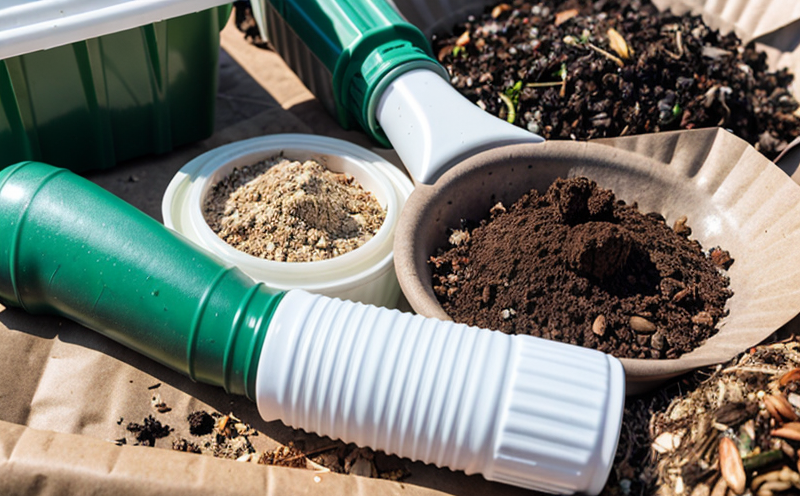EN 13666 Sulfur in Compostable Waste
The European Standard EN 13666:2005 sets forth methods to determine the sulfur content in compostable waste. This test is particularly important for ensuring that products intended for industrial composting are safe and do not contain excessive levels of harmful elements, including sulfur. Sulfur can be present in various forms such as sulfate, sulfide, or organic sulfur compounds.
Compostable materials often undergo complex degradation processes during the composting cycle, which may lead to the release of sulfur-containing compounds. The presence of high levels of sulfur can indicate potential contamination from non-compostable plastics or other industrial additives. This could impact the quality and acceptance of the final compost product in the market.
The standard provides specific guidelines for sample preparation and analysis methods using atomic absorption spectrophotometry (AAS). Proper sampling is critical to ensure accurate results, as variations in sulfur content can vary based on the type of waste material being tested. For instance, biodegradable plastics like PLA or starch-based materials may naturally contain higher levels of sulfur due to their manufacturing processes.
The test procedure involves digesting the sample with nitric acid and perchloric acid before determining the sulfur concentration using AAS. The digestion step ensures complete dissolution of all components in the sample, allowing accurate measurement without interference from other elements or compounds. It is essential that this step be conducted under controlled conditions to avoid any contamination.
Accurate analysis according to EN 13666 helps manufacturers and waste management facilities comply with regulatory requirements while ensuring product quality. By adhering to these standards, companies can demonstrate their commitment to environmental responsibility and sustainable practices. This is particularly relevant in regions like Europe where stringent regulations govern the production and disposal of biodegradable products.
Understanding the sulfur content in compostable waste allows for better decision-making regarding raw material selection, process optimization, and end-product quality control. It also enables stakeholders involved in the composting supply chain to make informed choices about which materials are suitable for industrial composting facilities.
- Ensures regulatory compliance: Meeting environmental standards is crucial for businesses operating within regulated industries.
- Evaluates material suitability: Identifies potential issues with raw materials used in the production of compostable products.
- Enhances product quality: Helps maintain consistent performance across batches by monitoring sulfur content throughout the manufacturing process.
- Promotes sustainability: Encourages environmentally friendly practices through precise measurement techniques that minimize negative impacts on ecosystems.
In conclusion, EN 13666 plays a vital role in ensuring the integrity of compostable waste products by providing reliable data on sulfur content. This information is invaluable for industries seeking to develop high-quality, sustainable solutions that meet both consumer expectations and regulatory demands.





